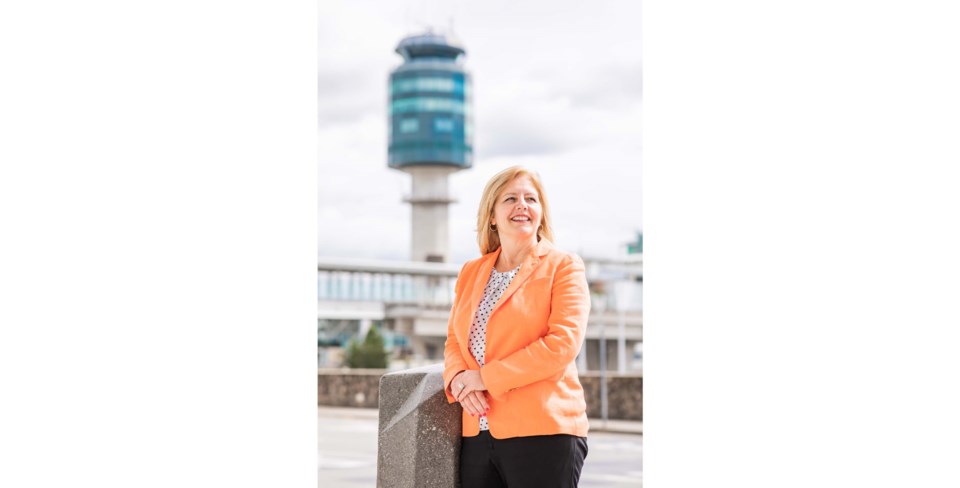Tamara Vrooman knew what she was getting into accepting the role of president and CEO of Vancouver International Airport in late April - in the middle of a pandemic - which she started on July 1 when long-time CEO Craig Richmond stepped down.
The tourism sector, which is estimated to bring $2 billion in economic activity to Richmond, has been hit hard during the pandemic with passenger volumes at YVR dropping initially by more than 90 per cent.
And Vrooman noted travel will most likely be the last sector to re-open after the COVID-19 virus is under control.
“I knew it would be a challenging time,” she said.
But she had started as the CEO of Vancity, the largest credit union in Canada, at the beginning of the 2007 financial crisis, which she said “fundamentally changed banking and finance at that time.” This gave her the “confidence and energy” to accept the YVR position, even knowing the pandemic was going to be a big factor in operations.
“It’s not very often in your career when you get an opportunity to take a step back, in this case a forced step back, and to look at an organization and a business end to end to determine how you take that next big step forward,” Vrooman said.
“We’re questioning everything in our daily lives, how we buy groceries, how we educate our children, how we go to work – of course, an operation like an airport would have similar questions,” she added.
Vrooman said the airport entered the COVID-19 pandemic in a “strong financial position,” which will help them weather the storm and bounce back when travelling is fully opened up.
Their strong financial performance for many years and the fact YVR is an award-winning airport has put confidence in the public and investors, Vrooman explained, giving them a “very high rating” with credit agencies.
“Airports in Canada can only finance by raising debt – the ability to finance debt is the measure of financial health,” Vrooman said.
With revenue at $571 million in 2019, YVR had $75 million more in revenue than expenses last year.
After the federal ban on non-essential travel was put in place in March, the airport lost more than 90 per cent of its passengers and terminal operations were consolidated – currently, the terminal is re-opening some areas and some domestic flights are back in the domestic terminal.
The number of passengers has moved up slightly in the past week, going from a low of about 5,000 per day to between 7,000 and 9,000 per day currently. These are largely repatriation trips, according to YVR, for example, international students returning home and domestic travellers visiting friends and family.
Despite the low number of passengers, there have been almost daily alerts of possible exposure on flights going in and out YVR – in July there were 33 alerts issued by the BC Centre for Disease Control.
But Vrooman pointed out, while the alerts are in place to warn the public, there have been no known transmissions on any flights in Canada so far.
What the airport authority has control over, however, is within the terminals, and that’s where they’ve put in a multi-layered approach with mandatory masks, enhanced cleaning, social distancing and technology to check for cleanliness.
“Our commitment is not to not just keep up but to stay ahead of best practices in health screening and testing,” Vrooman said.
YVR is asking that only essential travellers and airport workers enter the building resulting in fewer crowds.
Vrooman said the airport has been a “key part” of the growth in the region over the past 30 years and Metro Vancouver has become known as the gateway to the Asia Pacific.
The pandemic has thrown into question many sectors and Vrooman said business leaders are looking at how things can be done differently, for example, whether supply chains will change, whether there will be more demand for on-shore production after decades of out-sourcing abroad and growth in imports.
Changes might include new methods of delivery like last-mile drone delivery, affecting logistics and the movement of goods.
Other areas she sees growth in are health and the agritech sectors.
“If we think about the broader Sea Island, there’s likely an opportunity for logistics, for technology, for innovation, for biotech, for agritech, and for drone and multi-modal delivery to be a bigger part of what surrounds us so we can be the gateway to the new economy in the same way we’ve been the gateway to the Asia Pacific,” Vrooman said.



